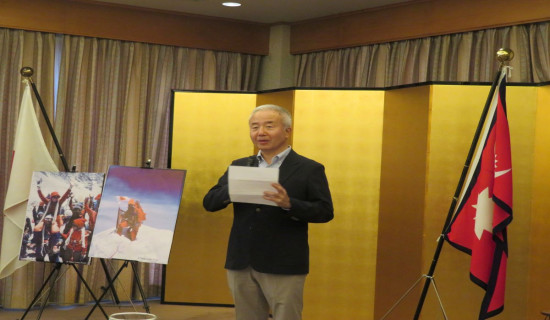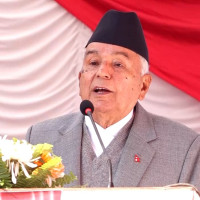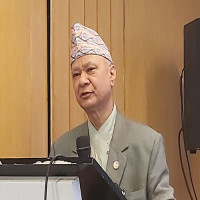- Saturday, 24 May 2025
Gurus: Promoters Of Greatness
"What do you perceive, Arjuna?" questioned Dronacharya on the day of the test, where both the Kauravas and Pandavas had congregated. Arjuna, with focused eyes, replied, "Only the eye of the bird, Guru, nothing else."
Guru nodded, impressed by Arjuna's response. His statements had depth to them and revealed a keen sense of perception. As the anticipation thickened, Arjuna's slender fingers expertly grasped the bow, pulling back the string with unwavering determination. The surrounding forest seemed to hold its breath, aware of the pivotal moment unfolding before them.
Time stood still as Arjuna's gaze fixated on the wooden bird. In that moment, his senses sharpened, the world around him fading into insignificance. The chirping of birds, the rustling of leaves, and the distant whispers of the wind ceased to exist. All that remained was the bird's eye—a tiny, distant target beckoning him.
With a swift release, the arrow soared through the air, propelled by Arjuna's focus. It was a perfect trajectory, as if the arrow itself was guided by divine hands. The crowd watched in awe as it found its mark, piercing the eye of the wooden bird with astonishing precision.
A resounding cheer erupted, echoing through the forest, as Arjuna's accomplishment was hailed by both friend and foe alike. Guru Dronacharya beamed with pride, realising that he had witnessed something extraordinary that day. Arjuna had proven himself not only as a remarkable archer but also as someone who possessed a profound understanding of the power of concentration and clarity.
Little did they know that this test would foreshadow the grand tapestry of events to come. Arjuna's unparalleled skills would soon be put to the ultimate test in the great Kurukshetra war, where he would become a pivotal figure in shaping the destiny of nations. The tale of Arjuna's test by Guru Dronacharya would be recounted for generations, immortalising the moment when a young archer's concentration and exceptional ability forever etched his name in the records of legendary warriors.
What were the compelling factors that drove the gurus of ancient times to cultivate disciples with unparalleled levels of hyper-expertise in specific areas? How did their burning desire to impart their knowledge and skills to the next generation contribute to the preservation and extraordinary advancement of their respective disciplines? Why did they place such profound importance on moulding extraordinary individuals who possessed the potential to carry their legacies forward, thereby shaping the very fabric of history?
Well, these thought-provoking questions are not merely queries but also contain inherent answers. If we delve deeper into the essence of a real guru, one who has transcended the limitations and responsibilities of their role, we begin to grasp the profound qualities that drive them. A real guru goes beyond the conventional boundaries, driven by a deep sense of purpose and an unwavering commitment to their disciples. They possess an unquenchable thirst for knowledge and an innate passion to ignite the flames of hyper-expertise in their chosen field. Their teachings transcend the mere transmission of skills; they instill a sense of purpose, discipline, and unwavering dedication in their disciples, guiding them towards greatness.
The Guru recognised Yudhisthira's inherent qualities of honesty, integrity, and a deep sense of justice. So, he nurtured these virtues, imparting valuable teachings on morality, governance, and decision-making, shaping Yudhisthira into an exemplary leader and the embodiment of righteousness.
In the case of Bhima, the mightiest warrior among the Pandavas, his Guru Dronacharya recognised his immense physical strength and potential. He focused on training Bhima in the art of combat, harnessing his raw power, and sculpting him into a formidable warrior. Bhima's Guru saw the unique strength he possessed and aimed to maximise his prowess in battle.
It is important to acknowledge that the Kauravas, too, possessed their own areas of excellence. Duryodhana and Dussasana, the Kaurava princes, received guidance from their Guru, Kripacharya. However, their tale illuminates a distinct facet of mentorship. Despite Kripacharya's virtuous and knowledgeable guidance, his influence on his disciples' characters fell short of his desired impact. Duryodhana's insatiable greed for power and Dussasana's inclination towards wrongdoing steered them onto a destructive path, disregarding the teachings imparted to them. This serves as a reminder that even with the guidance of a noble Guru, the choices and actions of individuals ultimately shape their destinies, underscoring the complex dynamics of mentorship and the power of personal choices in one's journey.
Dronacharya's ability to manage the diverse talents and intelligences within his vast pool of disciples is a matter of speculation. While the ancient texts do not explicitly detail his approach to multiple intelligences, it can be inferred that his astute understanding of each disciple's unique abilities played a role in their individual growth.
With thousands of disciples under his tutelage, it is conceivable that Dronacharya recognised and tailored his teaching methods to accommodate the diverse intelligences within his classroom.
He likely acknowledged the bodily-kinaesthetic prowess of some, the logical-mathematical acumen of others, and the interpersonal skills of a select few.
By fostering an environment that allowed for the development and mastery of individual intelligences, Dronacharya would have facilitated the growth of his disciples as experts in their chosen fields. This approach would have contributed to the overall success of his training program and the formation of a well-rounded group of warriors who collectively possessed a wide range of talents and skills.
Indeed, in exploring Howard Gardner's theory on multiple intelligences, it is essential to recognise the invaluable role of gurus like Dronacharya. Gardner's theory offers a framework for understanding the diverse forms of intelligence, but it does not surpass the significance of traditional Gurus in ancient societies. They played a pivotal role in recognising, nurturing, and guiding the unique talents and capabilities of their disciples.
Their profound mentorship encompassed not only the concept of multiple intelligences but also the holistic development of their disciples. By combining Gardner's theory on multiple intelligences with the profound guidance of enlightened gurus like Dronacharya, a more vibrant and comprehensive educational approach could emerge. This integrated approach would foster remarkable achievements and facilitate the cultivation of exceptional expertise among the learners.
(The author is an assistant professor at Lumbini Buddhist University.)
















-original-thumb.jpg)
